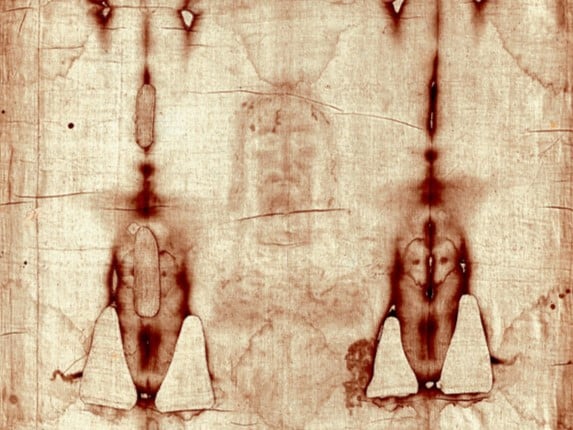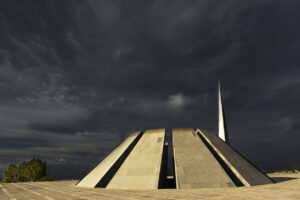
Hannah Felsbourg
26 August 2024
A viral AI-generated image based on the Shroud of Turin has spread across social media, YouTube, Facebook, and X.
News site coverage fuelled debates among scientists, media, and religious groups about its connection to Jesus Christ and a revaluation of claims of it being a medieval forgery.
“New study suggests Shroud of Turin is 2,000 years old,” headlines Aleteia, and Angelus News asks, “Is that really what Jesus looked like?”
Why is it making headlines now?
The renewed interest in the Shroud of Turin has been amplified by a viral AI-generated image.
Using artificial intelligence image generation tool Midjourney, the Daily Express created a realistic depiction of Jesus based on the Shroud’s faint facial image.
This representation, rendered with a sepia-toned effect reminiscent of an old photograph, mirrors the solemn expression and deep gaze typical of traditional depictions of Jesus.
What’s generated new interest in the Shroud?
Interest in the Shroud of Turin was revived as a 2022 study published in the journal Heritage is now receiving renewed media attention.
Scientists from the Institute of Crystallography at Italy’s National Research Council, led by Liberato De Caro, used Wide-Angle X-ray Scattering to analyse samples of the Shroud’s fabric.
Their findings suggest the Shroud may be around 2000 years old, potentially dating back to the time of Jesus.
This challenges previous radiocarbon dating conducted in 1988, which suggested the Shroud was a medieval creation, dating between 1260 and 1390 AD.
What is the Shroud of Turin?
The Shroud of Turin is a long piece of linen cloth that bears the faint images of the front and back of a man bearing marks consistent with crucifixion wounds.
Some Christians and researchers claim it is the burial cloth of Jesus Christ. It has been housed in the Cathedral of St John the Baptist in Turin, Italy, since the 16th century.
The Shroud has been the subject of fascination, reverence, and controversy for centuries, with debates about its authenticity continuing to this day.
What are the implications of these findings?
If further research validates these findings, it could significantly impact both religious and historical perspectives.
For some Christians, this could reinforce the belief that the Shroud is indeed the burial cloth of Jesus.
For historians, it could offer a rare physical connection to the time of Christ, providing valuable insights into ancient burial practices and the spread of Christianity.
What’s next for the Shroud of Turin?
The new findings led to calls for more extensive research to confirm the Shroud’s age and authenticity.
Scholars including archaeologist William Meacham have emphasised the need for further testing and analysis in his 2024 research paper.
Mr Meacham highlighted the need for additional isotopic and radiocarbon tests to verify the Shroud’s origins and confirm that it came from the Middle Eastern.
As the debate continues, the Shroud remains a powerful symbol of faith for many and a subject of ongoing scientific and historical inquiry.
For more faith news, follow The Melbourne Anglican on Facebook, Instagram, or subscribe to our weekly emails.







